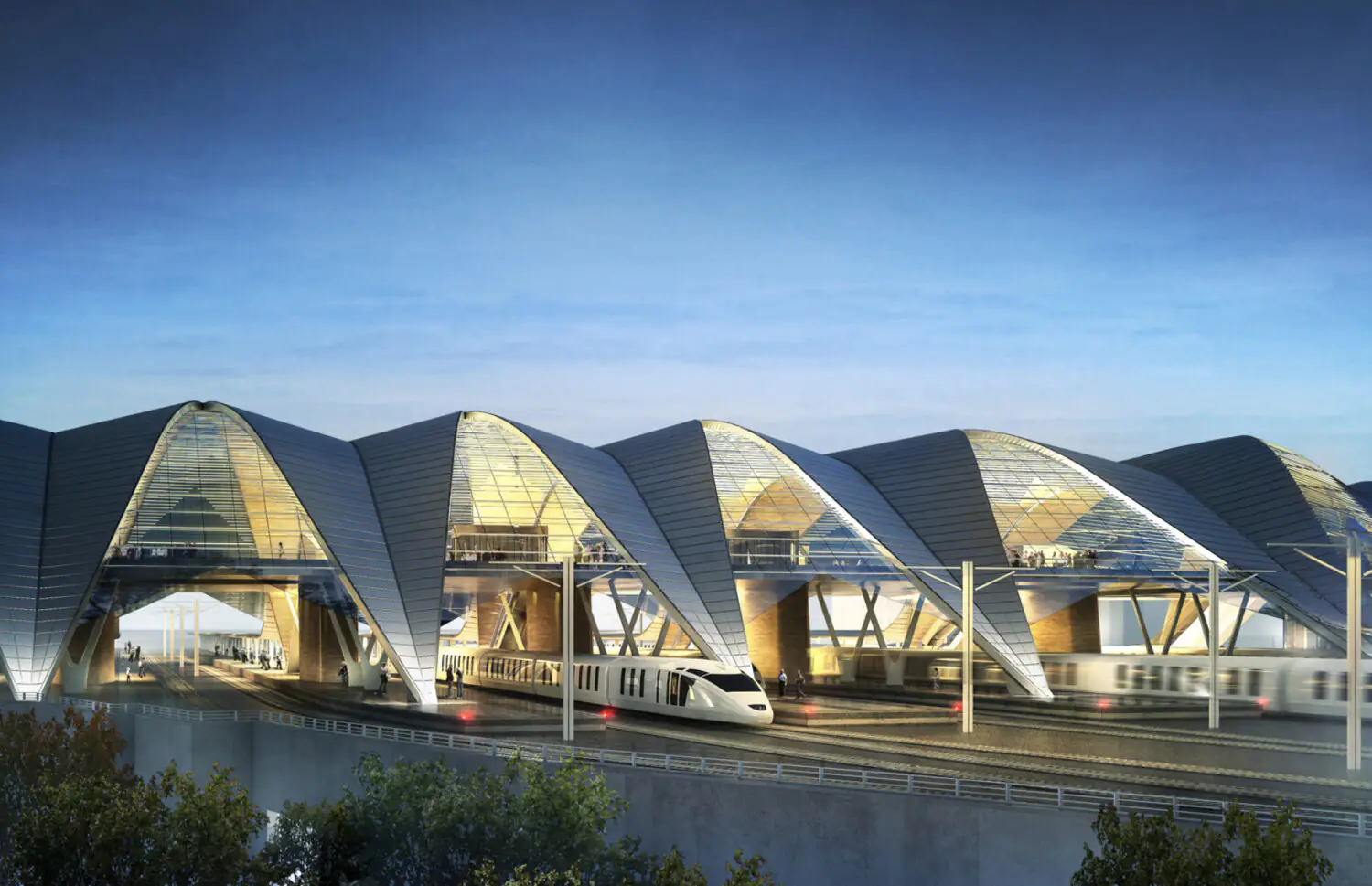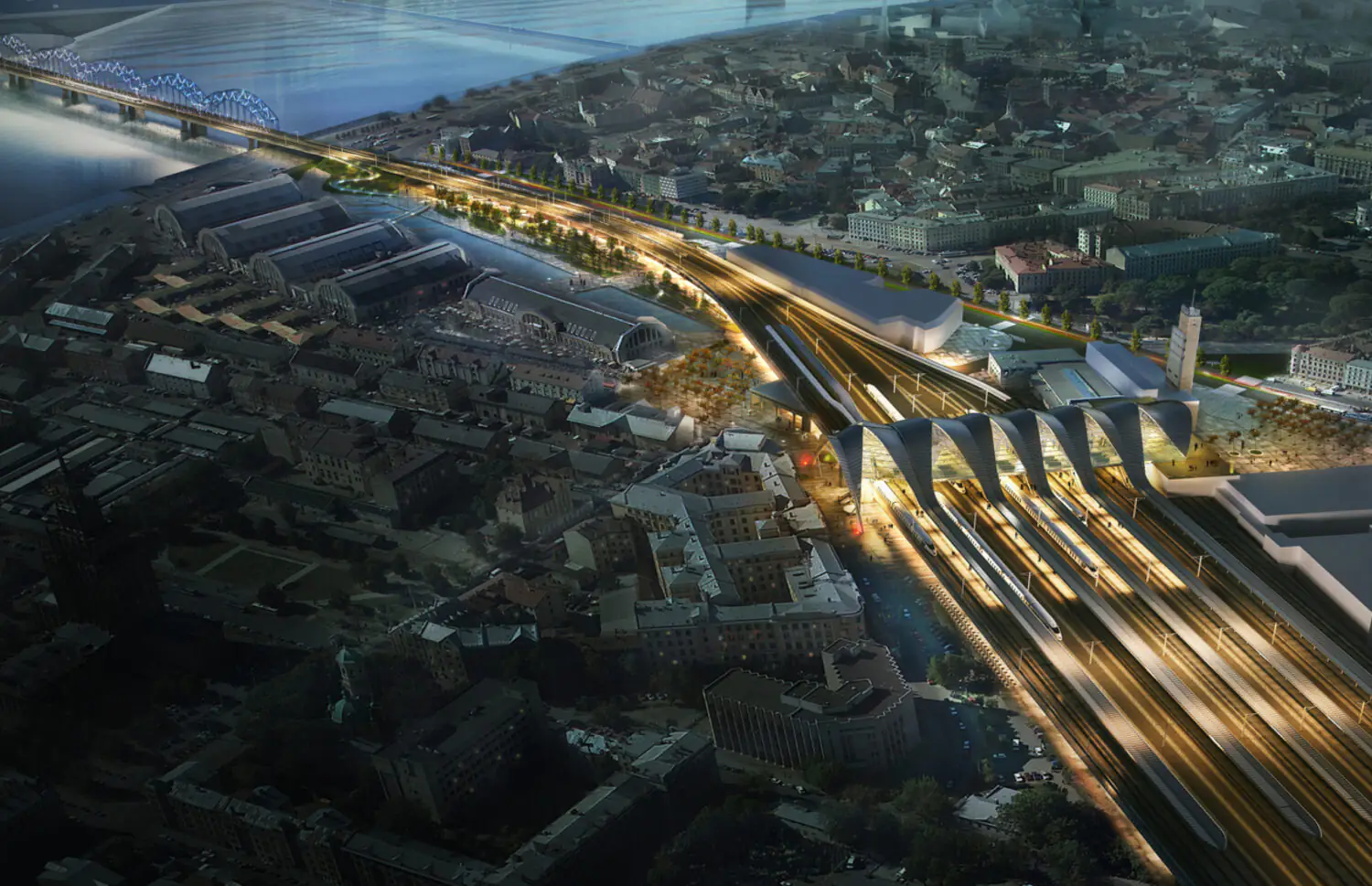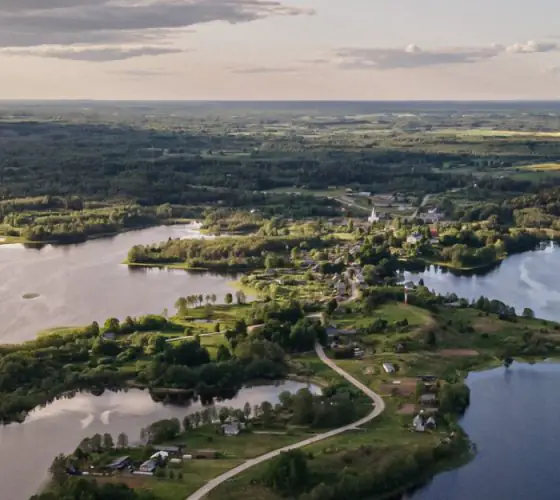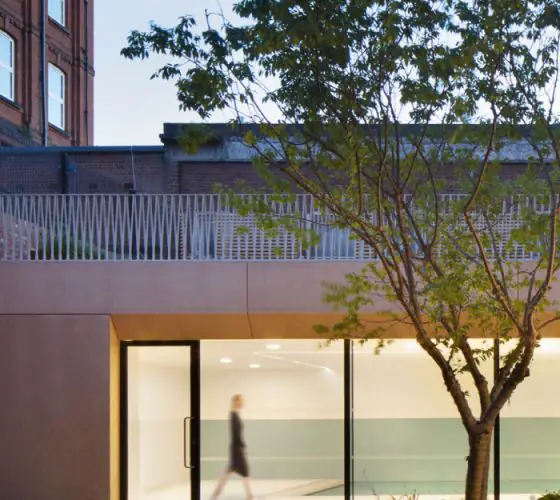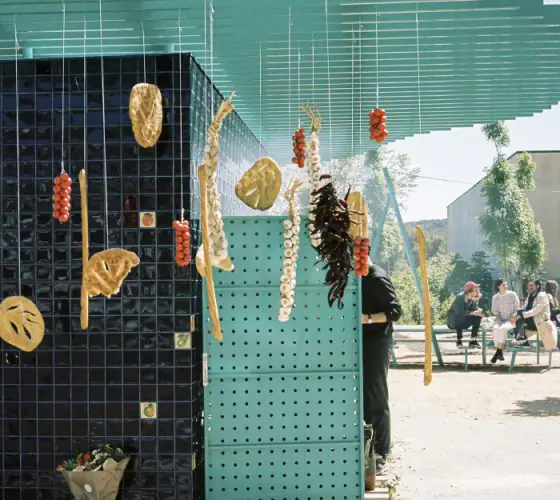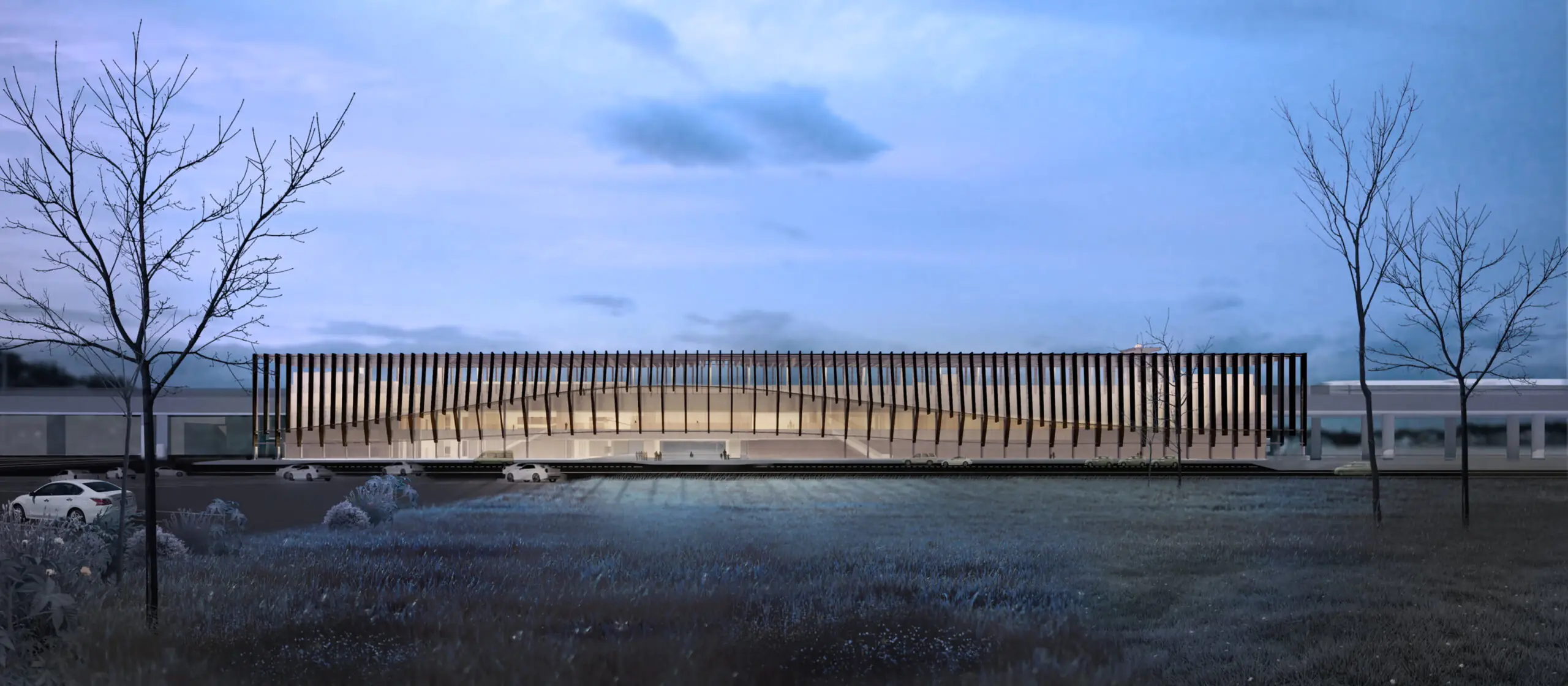
one-works.com
Two new hubs are coming to Riga as part of Rail Baltica, upgrading Riga’s regional and global connectivity. Riga Central Station and the new Riga Airport Station will soon become world-class high-speed gateways. Let us take a closer look inside these two upcoming Riga hubs.
Riga Central Station
The new Riga Central Station, to be the busiest station in the Baltic states, is envisioned as a modern, multifunctional transport hub that will serve as the heart of the Rail Baltica network in Latvia. Planned in the very centre of the capital, near the famous Central Market, it is a collaborative project by a team including PLH Arkitekter Denmark and BERERIX. The station is designed to seamlessly integrate various modes of transport — trains, buses, trams, and private vehicles.
The station’s most notable feature is the striking, translucent roof structure, which will cover the platforms and provide protection from the elements while allowing natural light to fill the space. The arched roof canopy resembling fern leaves in a nod to Riga’s Art Nouveau heritage, will create a dynamic silhouette against the Riga skyline. Large glass surfaces and the lifted canopy on one side are designed to provide views of the historic city centre and create a sense of arrival.
This new hub aspires to serve as a catalyst for urban redevelopment, with plans for new public spaces, commercial areas, and residential buildings surrounding the station. The station development seeks to create denser, active urban spaces around the transit hub that strengthen Riga’s identity as a metropolis. It will introduce new bicycle paths, recreational areas, a waterfront and a new bridge that will run parallel to the existing railway bridge, spanning the Daugava River. This rail, pedestrian and bicycle bridge will directly connect the new station and the surrounding area with Zakusala Island and Mukusalas Street.
These developments will contribute to the revitalization of the area and help create a vibrant, mixed-use neighbourhood that connects the historic Old Town with the more modern parts of the city.
New Riga Airport Station
The new Riga Airport Station, a project undertaken by One Works and Vektors T, will be a vital node on the Rail Baltica network at Riga International Airport, providing convenient and efficient rail connections for passengers arriving and departing from the region by plane. The train journey from Riga to the Airport station is estimated to take just eight minutes.
Architecturally, the new Riga Airport Station is characterised by its sleek, elegant lines and minimalist aesthetic. According to the architects, the external canopy, the station’s iconic element, is designed to reflect the meeting of the vast forests with the banks of the Baltic Sea. The station’s streamlined form is punctuated by large expanses of glass, which will provide passengers with clear views of the surrounding landscape and flood the interior with natural light. The extensive use of glass also serves to create a sense of openness and transparency, reinforcing the station’s role as a gateway to the city and the region.
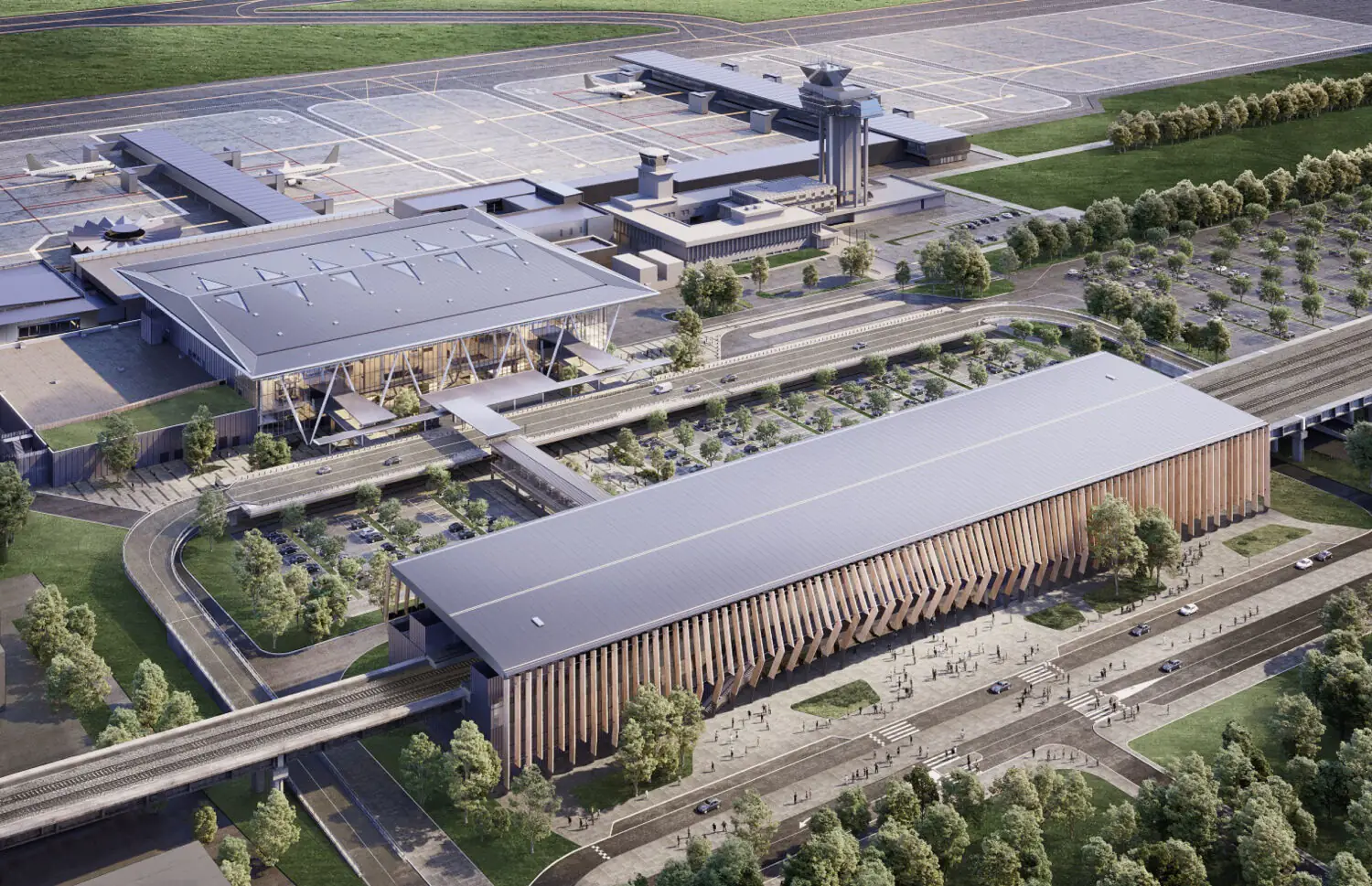
facebook.com/RailBalticaGlobalProject
According to the architects, the Riga Airport High-Speed Rail Station features an inner space that is enclosed by a shelter made of structural steel supports and finished with wooden fins. The station’s facade is etched with vertical elements of different levels of permeability, which replicate a natural rhythm. The station’s façade is designed to be perceived as more opaque or more transparent depending on an individual’s movements and the light.
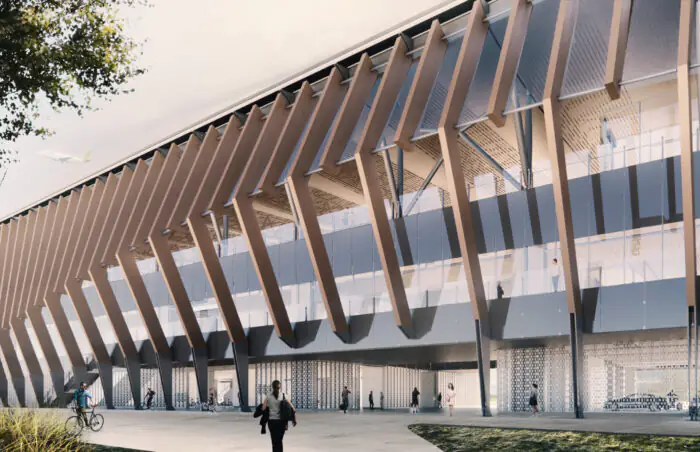
facebook.com/RailBalticaGlobalProject
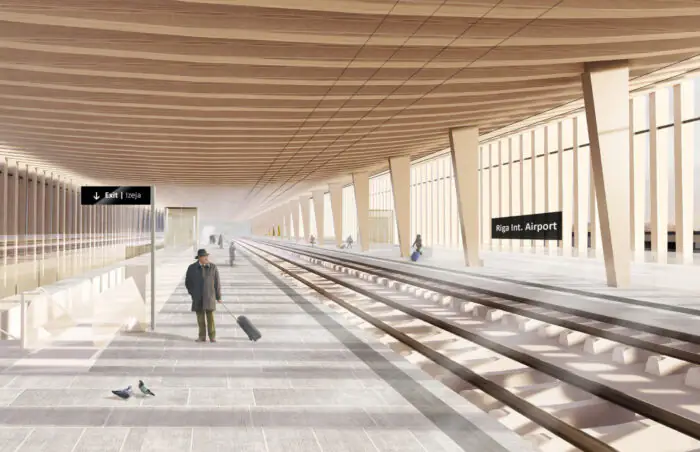
facebook.com/RailBalticaGlobalProject
Landscaped areas, pedestrian walkways, and bicycle paths will connect the station and airport terminal to nearby parking facilities, creating a pleasant and accessible environment for international travellers and locals alike. The station’s premises are designed to work with the airport’s planned expansion to 10 million passengers per year and accommodate future developments, including a parking building, tertiary facilities, hotels, office spaces, and a potential business park.
Sustainable development
Construction of large infrastructural projects can have an impact on the local environment. However, modern railway stations are built according to green building standards, minimising their impact on the environment. Both the upgraded Riga Central station and the new Riga Airport station are also individually designed with sustainability in mind, and include a number of features that will help reduce their carbon footprint.
The new Rail Baltica stations in Riga are being designed and built with a strong focus on environmentally sustainable practices and materials. Low-emitting, recycled and recyclable materials will be used in construction to minimise the stations’ embodied carbon. Acoustic studies and noise mitigation strategies aim to control the noise generated by both the construction and operation of the station. Waste separation and recycling programs will be implemented during construction too, with reuse of construction materials prioritised where feasible.
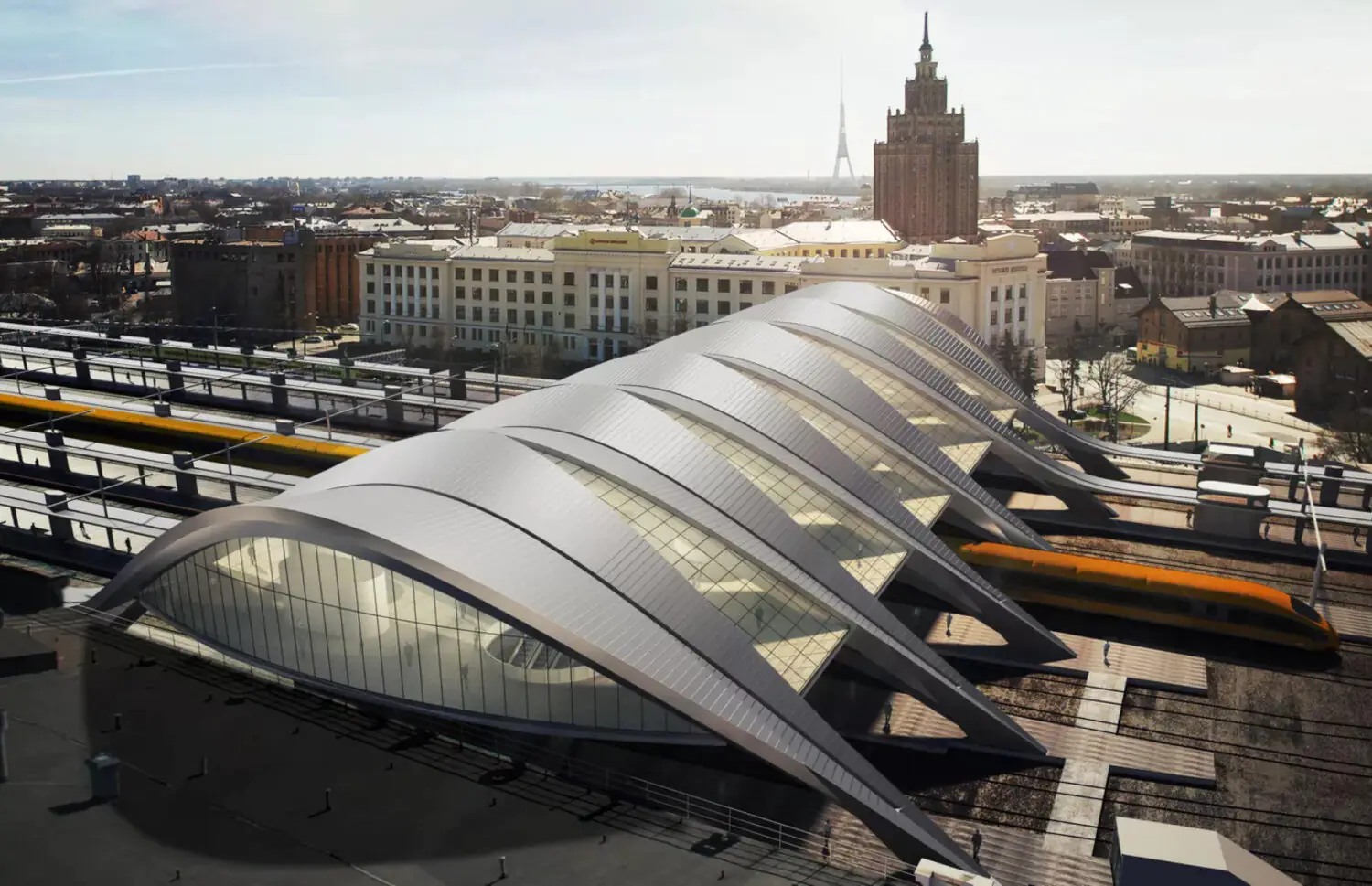
besix.com
The station’s developments will also feature new public parks and meadows planted with native species. These green areas will improve biodiversity, provide natural respite for travellers and offer ‘green value’ to the surrounding neighbourhoods.
Meanwhile, Riga International Airport Station aims to maximise sustainability through its design and landscaping. The open street level layout prioritises pedestrian access to the airport terminal. A central green plaza and long planted green corridor running through the station premises will not only provide aesthetic and environmental benefits, but also help integrate the station into the broader landscape and sense of place.
Railway stations can be sustainable in their own right: they reduce the burden on roads, minimise citizens’ dependence on cars, and encourage the use of public transport. In addition, Rail Baltica trains run entirely on electricity — which means they don’t directly emit carbon dioxide into the atmosphere. Pedestrian and bicycle paths will be optimised to integrate the stations into Riga’s transit network: for example, walking or cycling from the Central Station to the left bank of the Daugava River will be much faster with the new bridge. New public parks and green areas planted with local grasses and flowers will be created on the territory of the stations. They will improve biodiversity and add value to nearby neighbourhoods.
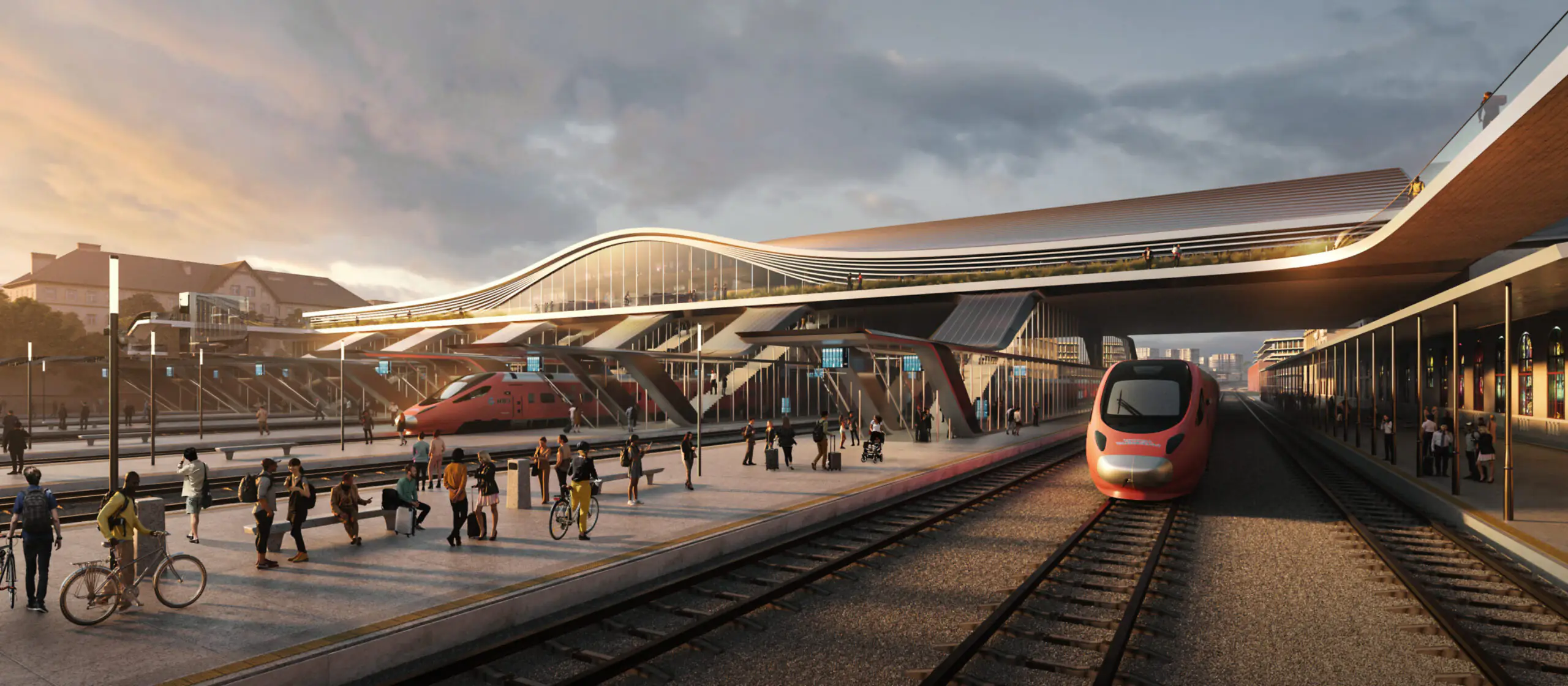
globalconstructionreview.com
On track?
The expectations for Rail Baltica’s two new stations in Riga are high. They are envisioned as modern, state-of-the-art hubs that will transform Riga’s transport system and put the city on Europe’s high-speed rail map.
However, delivering mega infrastructure projects on time and on budget is never easy. Latvia has already seen a 5.3% increase in construction costs this year, and the geopolitical situation in Europe has become more unstable with the war in Ukraine. These and other challenges could impact the project in unforeseen ways.
But the need for Rail Baltica in Riga remains as strong as ever. The project still has great potential if obstacles can be addressed adaptively. There is a firm commitment in Riga to deliver successful stations that fulfil Rail Baltica’s promise. Whether or not the two stations will perfectly match the original vision, with agile planning and public support, they could still vastly improve Riga’s transit and connectivity. Resilience and pragmatism will be key to ensuring the stations maximise their benefits for the Latvian capital.
In the end, Riga’s new Rail Baltica stations aim to be gateways to a more integrated and sustainable future — connecting the Baltic states faster to the rest of Europe. If the project can navigate short-term challenges with a long-term vision, the result will represent a major step forward for Riga.
In conclusion, both the new Riga Central Station and Riga Airport Station are set to become iconic landmarks in their own right, showcasing the city’s commitment to sustainable, innovative, and high-quality architecture. These stations will not only serve as critical nodes in the Rail Baltica network but also contribute to the overall urban fabric and liveability of Riga.
Read more about the Rail Baltica project connecting the Baltic States with the rest of Europe in another article.


